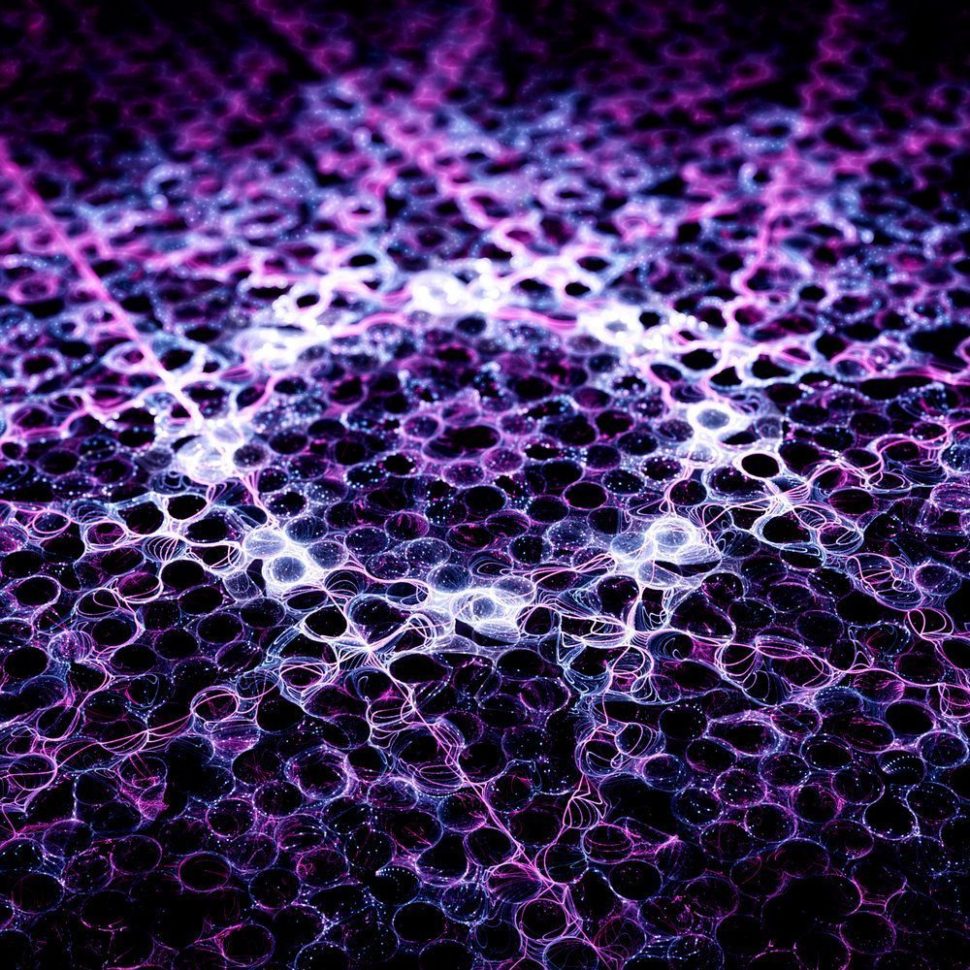Physicists have made the first images ever of half-light, half matter quasiparticles. This could be a step toward nanophotonic circuits that operate much faster than current electrical circuits.
Quasiparticles, also called virtual particles, are quantums of energy contained in a crystal lattice that behave as particles (they have position and momentum).
In quantum physics, quasiparticles are used to describe the propagation of energy in a dielectric material or a semiconductor by the mechanism of gradual transfer, from one molecule to the next. The energy transferred is excitation energy (excitation transfer) and molecules remain in place, as opposed to transfer accompanied by mass transport (diffusion) or electricity (electrical conduction).
Scientists photographed quasiparticles for the first time.Click To TweetQuasi-particles have been imagined by theory rather than actually measured, until now.
First Ever Pictures of “Exciton-Polariton” Quasiparticles
A team of researchers at Iowa State University, led by Zhe Fei, an assistant professor of physics and astronomy, have succeeded in taking the first images ever of exciton-polaritons, a type of quasiparticle.
Exciton-polaritons are partly matter and partly light quasiparticles that result from the strong coupling between a light wave and an electric polarization wave, when the light is absorbed by a semiconductor. Researchers created the exciton-polaritons by launching a laser beam at the tip of a nano-imaging system aimed at a MoSe2 flake (molybdenum diselenide, a semiconductor that supports excitons).

Unlike other experiments that only observe quasiparticles at extremely cold temperatures, Fei and his colleagues worked at room temperature and used the scanning near-field optical microscope to take nano-optical images of the exciton-polariton.
“We are the first to show a picture of these quasiparticles,” Fei said, “and how they propagate, interfere and emit.”
Researchers published their findings in the journal Nature Photonics.
Applications of Exciton-Polariton Quasiparticles
Physicists believe that light photons behave like particles and electromagnetic waves at the same time, like electrons. On the basis of this “wave-particle duality” phenomenon, many modern technologies have been developed, such as the digital camera and various light sensors.
Exciton-polaritons represent one of the recently created virtual particles, which, like the photon simultaneously behaves like a wave and a particle.
Researchers–who need to study further the physics of exciton-polaritons and how they can be manipulated–think that being able to create exciton-polaritons at room temperature and measure their properties (propagation characteristics) would open the way to many future applications in photonics and quantum technologies.
One potential use of quasiparticles is nanophotonic circuits that could be up to one million times faster than conventional electrical circuits.







Comments (0)
Most Recent